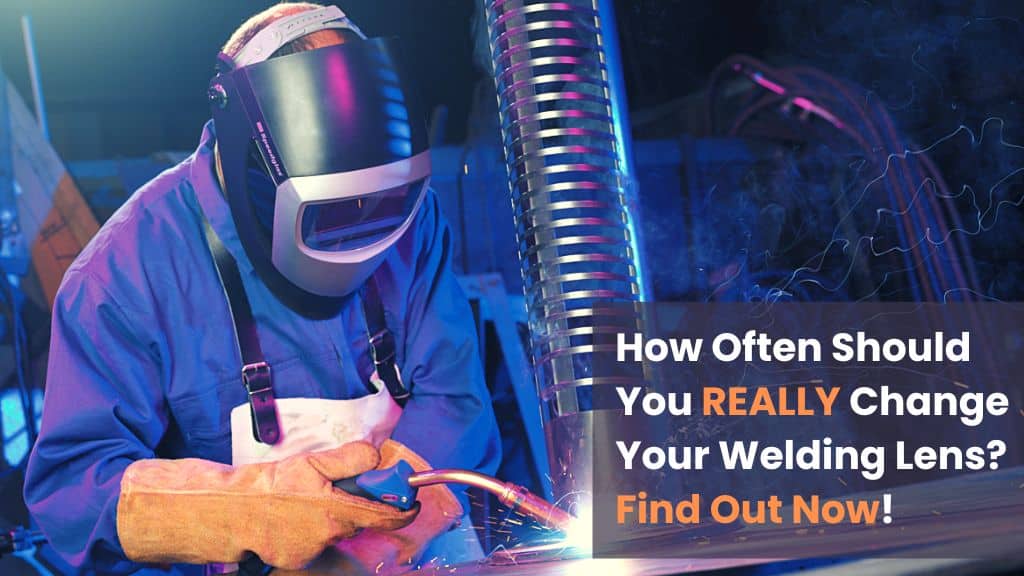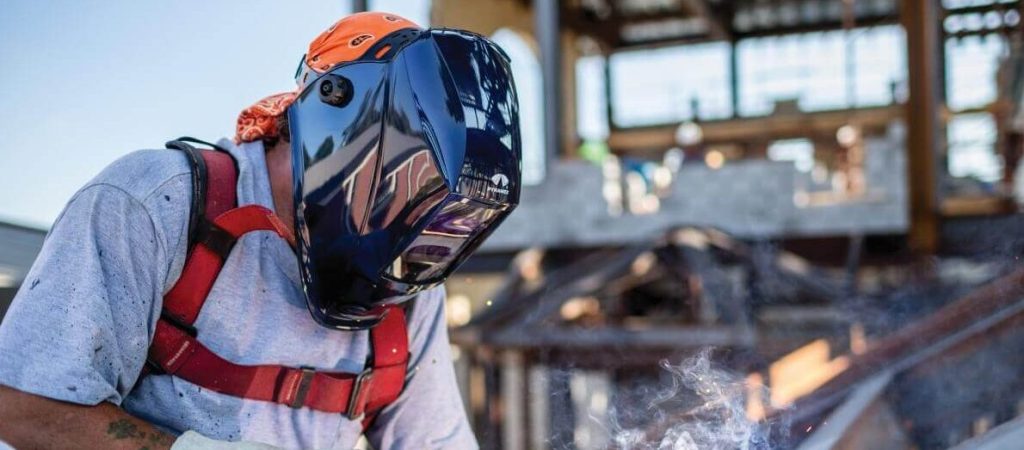It is recommended to replace your welding lens every six months to a year for polycarbonate lenses and every two years for glass lenses with regular use. However, if you notice any damage or wear and tear on your lenses, such as scratches, cracks, or discoloration, it is essential to replace them immediately to ensure optimal eye protection.
It is also important to follow recommended guidelines for proper maintenance and care of your welding lenses.

While some people may suggest replacing your welding lens once a month, this is not a common recommendation.
The frequency of replacing your welding lens depends on several factors, such as the type of lens, how often you use it, and the intensity of the welding process.
However, replacing your welding lens once a month may not be necessary unless you are using it extensively and notice significant wear and tear or damage.
It is important to follow recommended guidelines and replace any damaged or worn-out components immediately to maintain optimal eye protection during welding.
In this article, we will explore the factors that determine the lifespan of welding lenses, how often to change them, and answer some commonly asked questions related to welding lenses.
How Long Do Welding Lenses Last?
The lifespan of a welding lens depends on several factors, including the type of lens, the frequency of use, and the intensity of the welding process. Most welding lenses are made of polycarbonate or glass, and each material has a different lifespan.
Polycarbonate lenses are the most common type of welding lens. They are lightweight, durable, and provide excellent protection against UV and infrared radiation.
Polycarbonate lenses typically last between six months to a year with regular use, but this can vary based on the intensity of the welding process.
Glass lenses are heavier and more expensive than polycarbonate lenses, but they are also more durable.
Glass lenses can last up to two years with regular use, but they require more care than polycarbonate lenses.
How Often Should You Change Your Welding Lenses?
It is essential to change your welding lenses regularly to maintain optimal eye protection. The frequency of lens changes depends on how often you use them, the intensity of the welding process, and the type of lens you are using.
For polycarbonate lenses, it is recommended that you change them every six months to a year with regular use. However, if you use your welding gear frequently or work in an environment with intense welding, you may need to change them more often.

For glass lenses, it is recommended that you change them every two years with regular use.
However, as with polycarbonate lenses, if you use your welding gear frequently or work in an environment with intense welding, you may need to change them more often.
Factors that can affect the lifespan of your welding lenses include exposure to heat, moisture, and other environmental factors.
If you notice any damage or wear and tear on your lenses, such as scratches, cracks, or discoloration, it is essential to replace them immediately.
How Often Should You Change Your Glasses?
In addition to welding lenses, many welders wear glasses for everyday use. The lifespan of glasses depends on several factors, including the quality of the glasses, the frequency of use, and how well they are cared for.
If you wear prescription glasses, you should follow your optometrist’s recommendations for how often to replace them.
However, if you wear glasses for eye protection while welding, it is recommended that you replace them every year or as soon as you notice any damage or wear and tear.
How Often to Change Lens Case?
The lens case is an essential component of your welding gear. It protects your lenses from scratches, dust, and other environmental factors when they are not in use.
The lifespan of a lens case depends on the material it is made of, how well it is cared for, and how often it is used.
If you have a plastic lens case, it is recommended that you replace it every year or as soon as you notice any damage or wear and tear.
If you have a metal lens case, it can last for several years with proper care.
It is essential to clean your lens case regularly to ensure that it does not harbor bacteria or other contaminants that can affect the lifespan of your lenses.
How Often Should Eyeglasses Be Changed?
If you wear prescription glasses for daily use, you should follow your optometrist’s recommendations for how often to replace them.
However, if you wear glasses for eye protection while welding, it is recommended that you replace them every year or as soon as you notice any damage or wear and tear.
Welding lenses provide a higher level of protection than regular glasses and are specifically designed to protect your eyes from the intense light and heat produced during welding.
Regular glasses may not provide sufficient protection and can even be hazardous during welding, as they can shatter or break under the high temperatures and impact of flying debris.
If you wear prescription glasses, you can use prescription welding lenses that can be fitted onto your regular glasses.
These lenses are designed to fit over your prescription lenses and provide additional protection during welding.
How Many Times Should I Change My Glasses?
The frequency of changing your glasses depends on several factors, including the quality of the glasses, the frequency of use, and how well they are cared for.
If you wear glasses for eye protection during welding, it is recommended that you replace them every year or as soon as you notice any damage or wear and tear.
Regular glasses that are not designed for welding can also be hazardous during welding, as they may not provide sufficient protection and can even shatter or break under the high temperatures and impact of flying debris.
If you wear prescription glasses, you can use prescription welding lenses that can be fitted onto your regular glasses.
FAQs:

Can I clean my welding lens?
Yes, you can clean your welding lens. It is important to clean your lens regularly to ensure that it is free from dust, dirt, and other contaminants that can affect its lifespan.
You can use a microfiber cloth or lens cleaning solution to clean your lens. Avoid using abrasive materials or harsh chemicals that can scratch or damage your lens.
Can I reuse a damaged welding lens?
No, you should not reuse a damaged welding lens. A damaged lens, such as one with cracks, scratches, or discoloration, can compromise its effectiveness in protecting your eyes during welding.
It is important to replace a damaged lens immediately to ensure optimal eye protection.
Can I use regular glasses for welding?
No, regular glasses are not recommended for welding. They may not provide sufficient protection and can even be hazardous during welding, as they can shatter or break under the high temperatures and impact of flying debris.
Welding lenses provide a higher level of protection and are specifically designed to protect your eyes from the intense light and heat produced during welding.
Can I wear contact lenses during welding?
No, contact lenses are not recommended for welding. They can trap heat and particles against your eyes, causing irritation and potential damage.
It is recommended to wear prescription welding lenses over your regular glasses or use a welding helmet with built-in lenses.
How do I know when to replace my welding lenses?
It is important to replace your welding lenses regularly to maintain optimal eye protection.
- The frequency of lens changes depends on how often you use them, the intensity of the welding process, and the type of lens you are using.
- If you notice any damage or wear and tear on your lenses, such as scratches, cracks, or discoloration, it is essential to replace them immediately.
- It is also recommended to replace your lenses every six months to a year for polycarbonate lenses and every two years for glass lenses with regular use.
- In conclusion, maintaining optimal eye protection during welding is crucial to prevent long-term vision problems or even blindness.
Regularly changing your welding lenses, glasses, and lens case, and taking proper care of them, can help ensure that you are adequately protected during welding.
It is important to follow recommended guidelines and replace any damaged or worn-out components immediately.